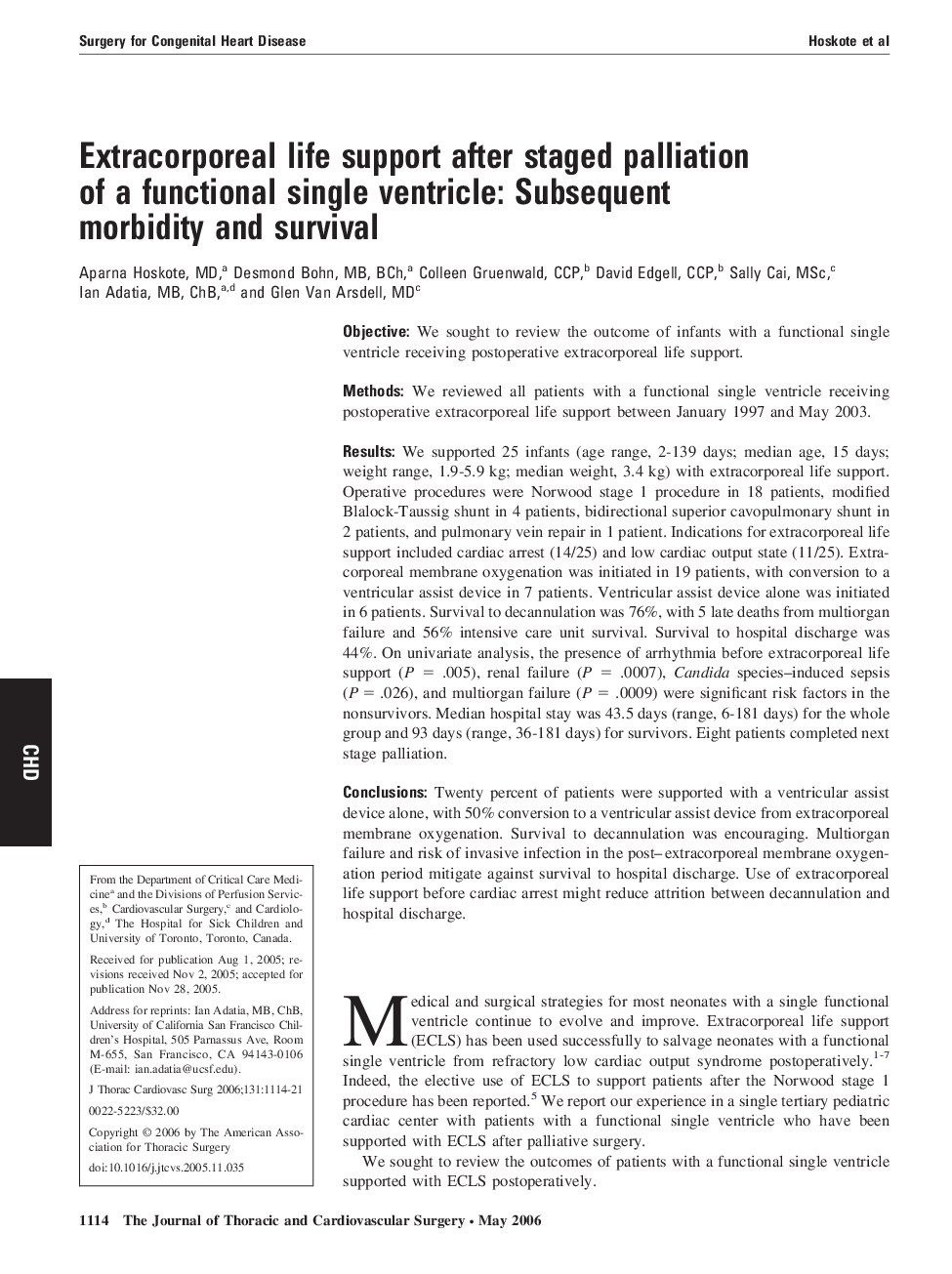| Article ID | Journal | Published Year | Pages | File Type |
|---|---|---|---|---|
| 2987042 | The Journal of Thoracic and Cardiovascular Surgery | 2006 | 8 Pages |
ObjectiveWe sought to review the outcome of infants with a functional single ventricle receiving postoperative extracorporeal life support.MethodsWe reviewed all patients with a functional single ventricle receiving postoperative extracorporeal life support between January 1997 and May 2003.ResultsWe supported 25 infants (age range, 2-139 days; median age, 15 days; weight range, 1.9-5.9 kg; median weight, 3.4 kg) with extracorporeal life support. Operative procedures were Norwood stage 1 procedure in 18 patients, modified Blalock-Taussig shunt in 4 patients, bidirectional superior cavopulmonary shunt in 2 patients, and pulmonary vein repair in 1 patient. Indications for extracorporeal life support included cardiac arrest (14/25) and low cardiac output state (11/25). Extracorporeal membrane oxygenation was initiated in 19 patients, with conversion to a ventricular assist device in 7 patients. Ventricular assist device alone was initiated in 6 patients. Survival to decannulation was 76%, with 5 late deaths from multiorgan failure and 56% intensive care unit survival. Survival to hospital discharge was 44%. On univariate analysis, the presence of arrhythmia before extracorporeal life support (P = .005), renal failure (P = .0007), Candida species–induced sepsis (P = .026), and multiorgan failure (P = .0009) were significant risk factors in the nonsurvivors. Median hospital stay was 43.5 days (range, 6-181 days) for the whole group and 93 days (range, 36-181 days) for survivors. Eight patients completed next stage palliation.ConclusionsTwenty percent of patients were supported with a ventricular assist device alone, with 50% conversion to a ventricular assist device from extracorporeal membrane oxygenation. Survival to decannulation was encouraging. Multiorgan failure and risk of invasive infection in the post–extracorporeal membrane oxygenation period mitigate against survival to hospital discharge. Use of extracorporeal life support before cardiac arrest might reduce attrition between decannulation and hospital discharge.
